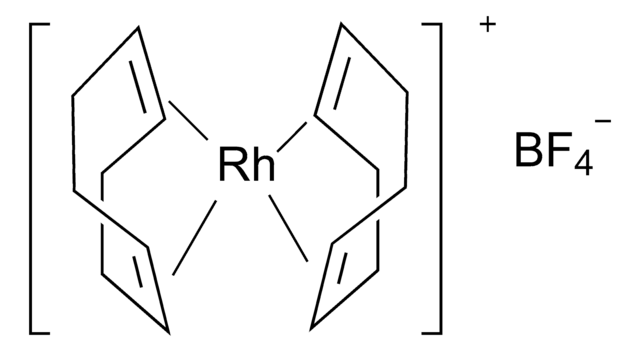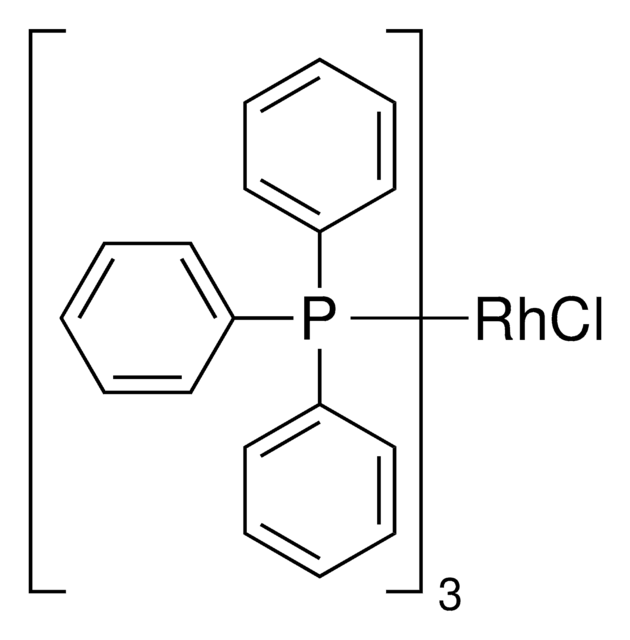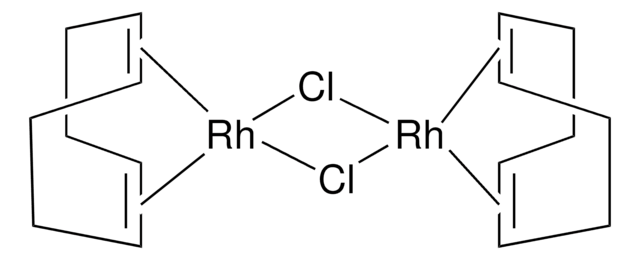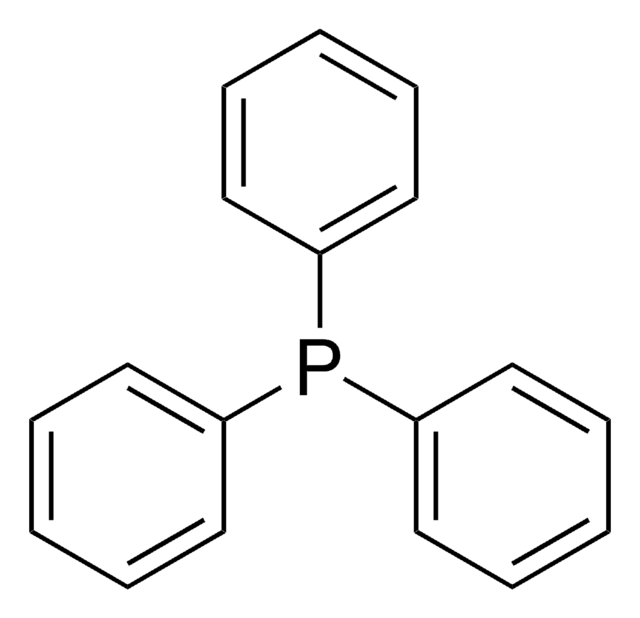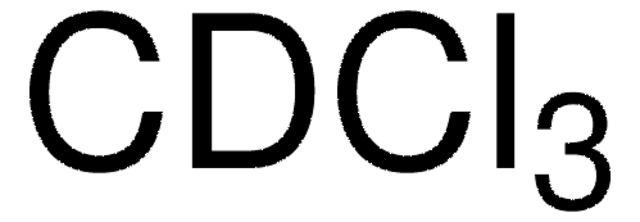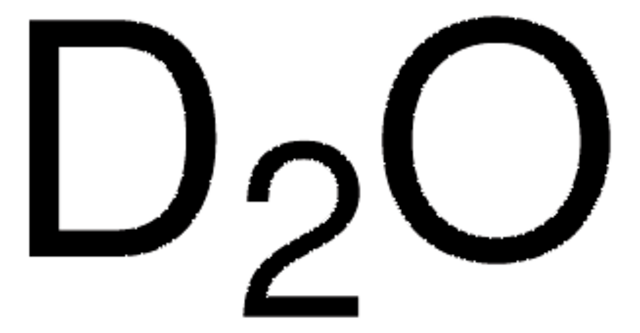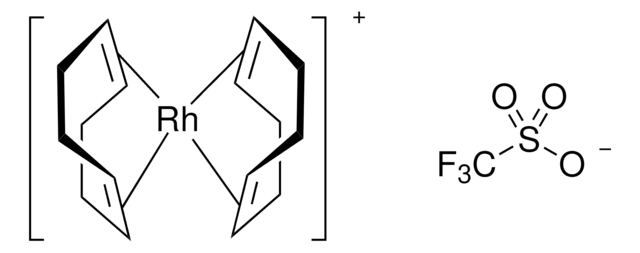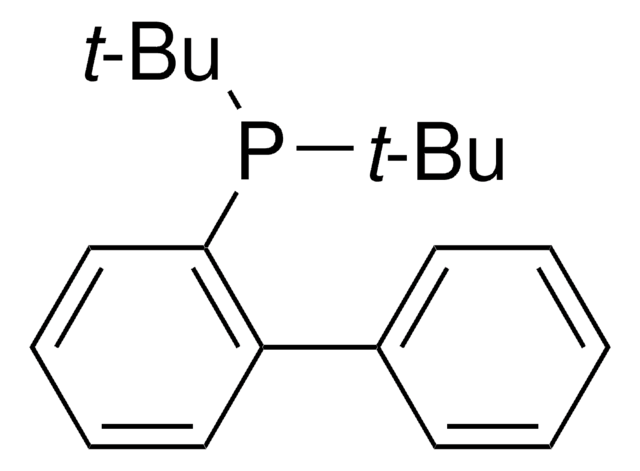341134
[1,4-Bis(diphenylphosphino)butane](1,5-cyclooctadiene)rhodium(I) tetrafluoroborate
98%
Synonym(s):
[Rh(dppb)(COD)]BF4
About This Item
Recommended Products
Quality Level
Assay
98%
reaction suitability
core: rhodium
reagent type: catalyst
mp
205 °C (dec.) (lit.)
SMILES string
[Rh+].F[B-](F)(F)F.C1CC=CCCC=C1.C(CCP(c2ccccc2)c3ccccc3)CP(c4ccccc4)c5ccccc5
InChI
1S/C28H28P2.C8H12.BF4.Rh/c1-5-15-25(16-6-1)29(26-17-7-2-8-18-26)23-13-14-24-30(27-19-9-3-10-20-27)28-21-11-4-12-22-28;1-2-4-6-8-7-5-3-1;2-1(3,4)5;/h1-12,15-22H,13-14,23-24H2;1-2,7-8H,3-6H2;;/q;;-1;+1/b;2-1-,8-7-;;
InChI key
YESRLRPURJQQBI-ONEVTFJLSA-N
Related Categories
General description
Application
- Regioselective hydrogenation of thebaine to synthesize tetrahydrothebaine.
- Enantioselective reductive amination of α-ketoacids with benzylamines to synthesize α-N-benzylamino acids.
- Stereoselective hydrogenation of α-(hydroxymethyl)-acrylate derivatives to synthesize 3-hydroxy-2-methylpropanoates.
Signal Word
Warning
Hazard Statements
Precautionary Statements
Hazard Classifications
Acute Tox. 4 Dermal - Acute Tox. 4 Inhalation - Acute Tox. 4 Oral - Eye Irrit. 2 - Skin Irrit. 2 - STOT SE 3
Target Organs
Respiratory system
Storage Class Code
11 - Combustible Solids
WGK
WGK 3
Flash Point(F)
Not applicable
Flash Point(C)
Not applicable
Personal Protective Equipment
Choose from one of the most recent versions:
Already Own This Product?
Find documentation for the products that you have recently purchased in the Document Library.
Our team of scientists has experience in all areas of research including Life Science, Material Science, Chemical Synthesis, Chromatography, Analytical and many others.
Contact Technical Service